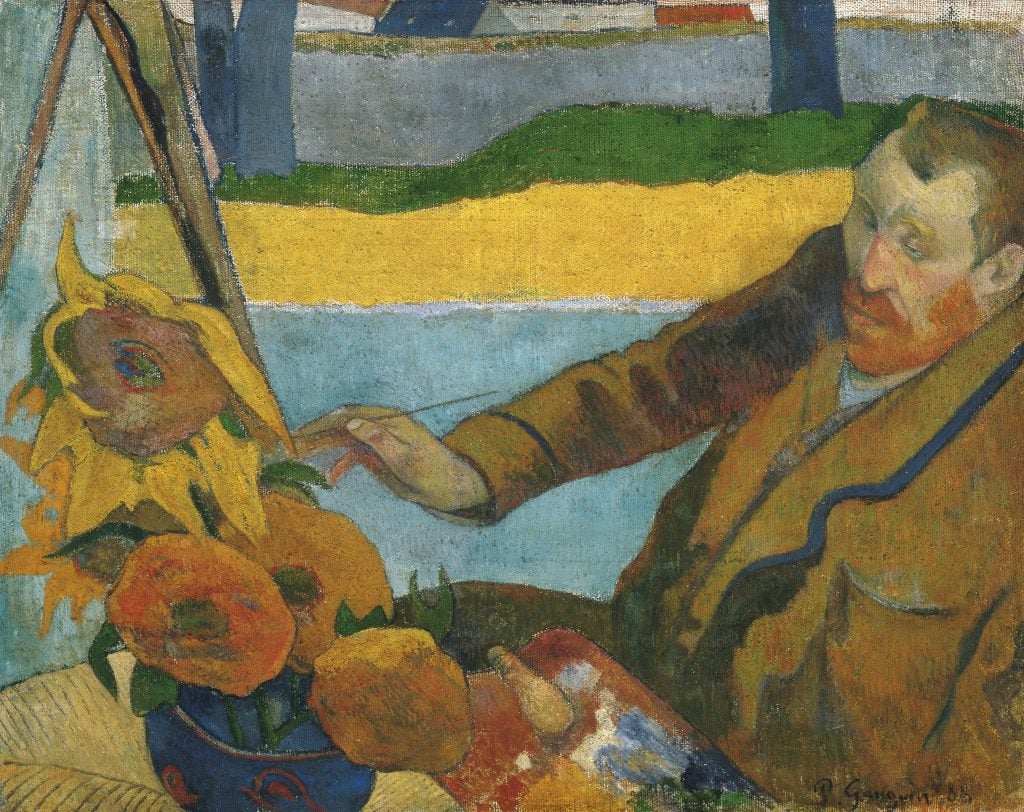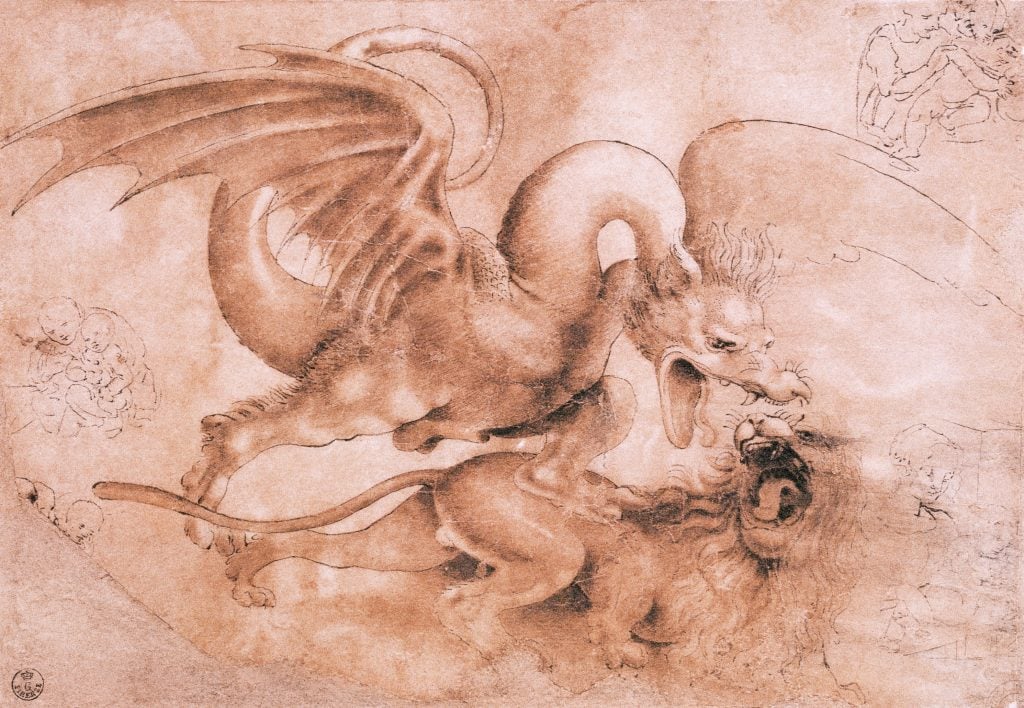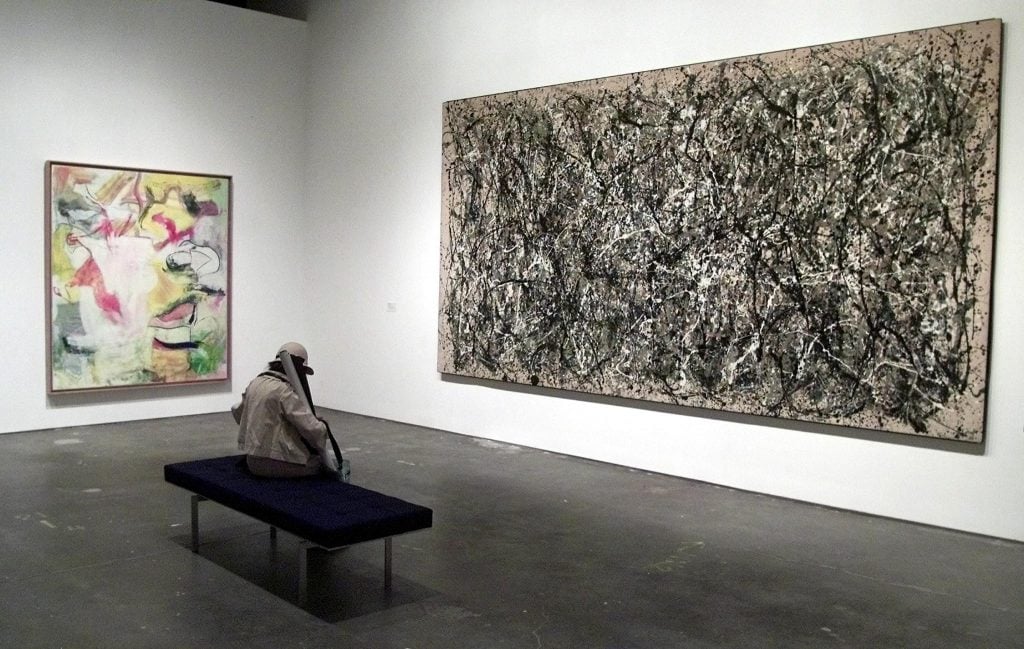Art History
Best Frenemies: 5 Notorious Rivalries in Art History
These duos went from healthy competition to all-out war.

These duos went from healthy competition to all-out war.

Jo Lawson-Tancred

The Met’s latest blockbuster exhibition “Manet/Degas” has made headlines for bringing Édouard Manet’s Olympia (1863)—one of art history’s best known and, at one time, most controversial paintings—to the U.S. for the very first time. It also dramatizes the tension between the two French painters, telling their stories side-by-side and reveling in the productive rivalry that would generate so many masterpieces and go on to inspire new generations of modernists.
In their lifetimes, Manet was more readily embraced by the mainstream, frequently exhibiting at the official Salons. Edgar Degas, meanwhile, struggled to find much commercial success and became involved with independent Impressionist exhibitions that would perplex and aggravate traditional critics.
So did the two artists get on? They belonged to the same Paris milieu and are said to have first bumped into each other at the Louvre. Degas, aged 30, was etching a copy of Velázquez’s Infanta Margarita Teresa (1653) onto a waxy copper plate, supposedly causing Manet, aged 32, to exclaim: “How bold of you to etch directly without any kind of preparatory drawing, I would never!” It was likely received as a backhanded compliment.

Edgar Degas, Édouard Manet and Mme. Manet (1868-69). Photo: Fine Art Images/Heritage Images/Getty Images.
The artists met on several more occasions, and the evidence suggests that these were amicable. The Met’s show includes several sketches that Degas made of Manet, although there is a notable absence of portraits that Manet did of Degas, hinting at an imbalance of affections. Any simmering resentments eventually came to a head in around 1868, when Degas painted Manet and his wife on a canvas that now bears the scars of their fallout. For reasons that aren’t known, Manet slashed the painting and returned it to Degas, who in turn sent back a work he had been given by Manet.
The volatility of their relationship is hardly unique in the history of art. Over the centuries, many artists have struggled to stop their admiration or camaraderie slipping into competition, or even conflict. Below are five more pairs of notorious artist rivalries.

Paul Gauguin, Vincent van Gogh Painting Sunflowers (1888). Photo: VCG Wilson/Corbis via Getty Images.
After Vincent van Gogh and Paul Gauguin met in Paris in 1887, they got on well enough to start up a regular exchange of paintings and letters, with Van Gogh sending Gauguin two of his sunflower studies. Their rapport was strong enough that when Van Gogh set up an artists’ commune at the “Yellow House” in the southern city of Arles in 1888, he invited Gauguin to join. At first, the cohabitation passed easily enough and the two artists became close companions, often painting each other and enjoying vigorous debates about their different approaches to art in the wake of Impressionism. Eventually, however, these sparring matches became a bit too impassioned or, to quote, Van Gogh, “excessively electric.”
Gauguin fled not long after Van Gogh threatened him with a knife on December 23 and eventually cut off a piece of his own ear. The pair never met in person again, but correspondence continued until Van Gogh’s death in April 1890. Nonetheless, the short-lived, intense relationship left a lasting mark, and Gauguin paid tribute to Van Gogh a few times by placing sunflowers in his paintings.
Leonardo da Vinci and Michaelangelo

Leonardo da Vinci, Fight Between a Dragon and a Lion. Photo: © Arte & Immagini srl/CORBIS/Corbis via Getty Images.
At first glance, it seems like Leonardo and Michelangelo—perhaps the most legendary artists of the Renaissance era—were straightforward enemies, but is there more to it? Their mutual hatred was well-known to contemporaries, with the great art historical chronicler Vasari noting that they harbored “an intense dislike for each other.” One anonymous manuscript described a heated public spat in which Michelangelo sought to humiliate Leonardo, who was 23 years his elder, bringing up a failed commission from 1482 to make a bronze horse sculpture. “[You] were unable to cast it, and were forced to give up in shame,” sneered Michelangelo. If Leonardo had a good comeback, there is no record of it.
With both artists completing high profile projects in Florence and Rome, however, their work was pulled into an inevitable dialogue and, although their approaches differed considerably, clear influences can be detected. For example, it is widely believed that the position of baby Jesus in Madonna of the Yarnwinder (c.1501) by Leonardo must have informed the infant’s similar pose in Michelangelo’s marble relief known as the Taddei Tondo, from around 1505. Perhaps he was more influenced than he was willing to let on.

Francis Bacon, Three studies for a portrait of Lucian Freud at Sotheby’s London. Photo by Anthony Devlin/PA Images via Getty Images.
Two painters whose expressive, psychologically complex figurative work would come to define British art in the 20th century, met in London in the 1940s. Lucian Freud and Francis Bacon soon formed a complicated and intense friendship, meeting almost everyday and portraying each other often. The reason for their dramatic fallout has never been entirely clear, but both made caustic assessments of the other’s work. Freud once called Bacon’s paintings from the 1980s “ghastly”, and Bacon described some works of Freud’s bought by Charles Saatchi as “the worst ones I have ever seen.”
Bacon’s friend Barry Joule has since claimed that the animosity only grew when Freud, who owned Bacon’s Two Figures (1953), refused to lend it. Bacon was infuriated by not being able to include the work in his retrospective at Tate in 1985. It appears that the dispute was never resolved. In 1991, the year before Bacon died, Joule recalled sitting with him at a café when Freud walked in. “I saw Francis stiffen,” he said. “Lucian did a double-take, but marched right past him.”

Jackson Pollock, One (Number 31, 1950) (right) and Willem de Kooning Pirate (Untitled II) (left) at MoMA PS1 in 2002. Photo: MATT CAMPBELL/AFP via Getty Images.
Two titans of Abstract Expressionism, Willem de Kooning and Jackson Pollock, met while both exhibiting in a group show at McMillan Inc. in New York in 1942. By the 1950s, Pollock’s highly unique drip paintings had stolen the spotlight and De Kooning openly admitted to feelings of jealousy. “He busted our idea of a picture all to hell,” he once said of Pollock, admiringly. “Then there could be new pictures again.” Though his paintings were also respected within artistic circles —Pollock named De Kooning as one of his favorite artists in a splashy profile for Life magazine in 1949—it would be some time before De Kooning received the same widespread acclaim.
Pollock’s problem drinking, along with his combative nature, eventually pushed him to the fringes of the New York art scene. Any rivalry was ultimately severed following his death in 1956, with De Kooning reportedly declaring at the artist’s funeral, “It’s over. I’m number one”. A scandal followed a year later, when Pollock’s lover Ruth Kligman, who had survived the car crash, became romantically involved with De Kooning for about four years. He went on to live until the age of 92, and was able to see his work achieve the mammoth commercial success that he had always dreamed of.

Two gallery technicians pose with Picasso’s Femme au chignon dans un fauteuill(1948) (left) and Henri Matisse’s Anemones et gremones (1946) (right). Photo: Mary Turner/Getty Images for Sotheby’s.
Matisse and Picasso first met in 1906 and quickly cultivated a decades-long friendship; Picasso’s partner Françoise Gilot once remarked that “no one meant quite as much to him as Matisse.” Nonetheless, they kept a watchful eye on each others’ work and maintained a healthy lifelong rivalry. It is widely believed that Picasso’s Demoiselles D’Avignon (1907)—a landmark declaration of intent that kickstarted Cubism and its radical deconstruction of traditional illusionism—was directly inspired by Matisse’s flattened Fauvist canvas Le Bonheur de vivre, which Picasso had seen the year before. Nonetheless, Matisse was a vocal skeptic of Cubism and, decades later, Picasso was frank about his disappointment when Matisse accepted a commission to create the Chapelle du Rosaire de Vence (Vence Chapel) due to its religious affiliations.
In private, the artists’ mutual admiration was also charged with a competitive undercurrent. “In their meetings, the active side was Pablo; the passive, Matisse,” remembered Gilot. “Pablo always sought to charm Matisse, like a dancer, but in the end it was Matisse who conquered Pablo.”
More Trending Stories:
Art Dealers Christina and Emmanuel Di Donna on Their Special Holiday Rituals
Stefanie Heinze Paints Richly Ambiguous Worlds. Collectors Are Obsessed
Inspector Schachter Uncovers Allegations Regarding the Latest Art World Scandal—And It’s a Doozy
Archaeologists Call Foul on the Purported Discovery of a 27,000-Year-Old Pyramid
The Sprawling Legal Dispute Between Yves Bouvier and Dmitry Rybolovlev Is Finally Over